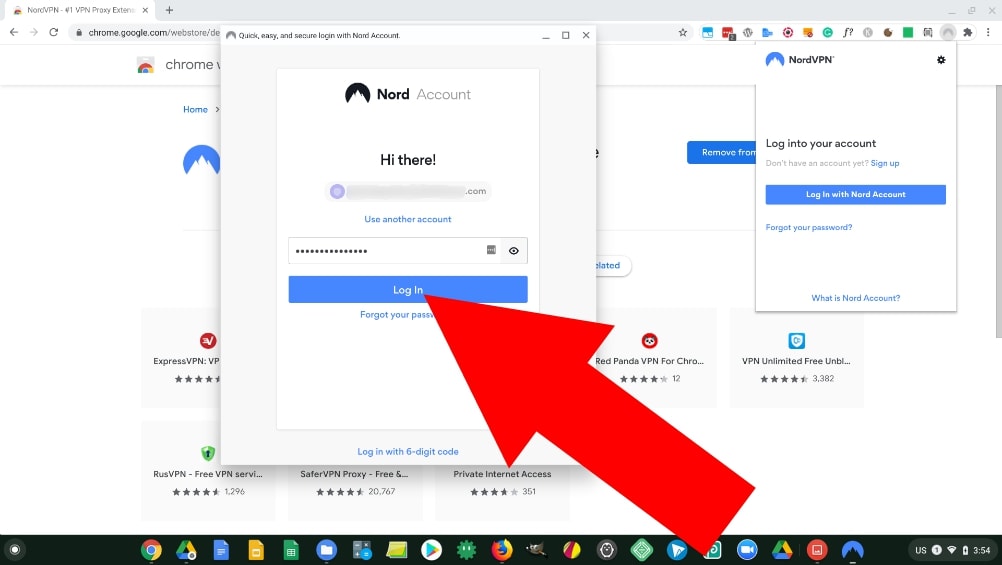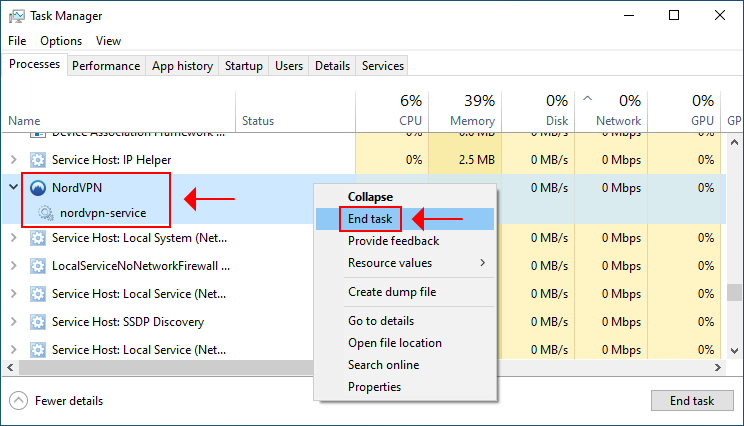

- Nordvpn for mac running but browser not connected how to#
- Nordvpn for mac running but browser not connected windows#


Ip netns exec myvpn ip route add default via 10.200.200.1 dev vpn1Įnable IPv4 routing and NAT for the interface in the namespace. Ip netns exec myvpn ip addr add 10.200.200.2/24 dev vpn1 Start the loopback interface in the namespace (otherwise many things don't work as expected…) ip netns exec myvpn ip addr add 127.0.0.1/8 dev loĬreate virtual network interfaces that will let OpenVPN (in the namespace) access the real network, and configure the interface in the namespace (vpn1) to use the interface out of the namespace (vpn0) as its default gateway ip link add vpn0 type veth peer name vpn1
Nordvpn for mac running but browser not connected how to#
Here's how to run OpenVPN and a single application in a separate namespace:Ĭreate the net network namespace: ip netns add myvpn You can do it with network namespaces on GNU/Linux. Thus, after you connect to VPN using this config, 3proxy.exe process will be started and a localhost-limited SOCKS5 proxy with DNS resolution capability will run on the 1080 port, now just configure your app to use localhost:1080 SOCKS proxy.
Nordvpn for mac running but browser not connected windows#
This option is supported starting with OpenVPN 2.4, if you have to stick with OpenVPN 2.3 (latest release for Windows XP), you'll have to add two dhcp-option DNS x.x.x.x lines with hardcoded IPs instead.Įcho internal 127.0.0.1> nf Pull-filter to preserve pushed DNS that otherwise will be dropped by route-nopull together with the pushed routes. Route to add a route for this interface, without this line it won't be used even if the app is bound to it. In your case you might need to comment out redirect-gateway instead. Route-nopull to ignore routes pushed from the server. ovpn file ( client, dev tun) I've added these lines: route-nopull I use 3proxy in SOCKS mode and bind its external interface to VPN's IP.

The upside is that this way you'll be able to limit the use of VPN in the browser to specific domains using FoxyProxy or similar add-ons. The downside of this method is that either your apps have to have proxy support or you'll have to use a proxifier (see here and here). People suggest ForceBindIP for this, but thanks to this answer I've got an idea to use proxy. The idea is to bind the outgoing network packages to VPN's interface. In the New Inbound Rule Wizard (which should appear), do the following:Ĭhoose the program you wish to block all traffic to except on the VPN connection, and click next. On the right pane, you will see an option for a New Rule. In this window, click Inbound Rules (see below). You should see a window titled Windows Firewall with Advanced Security. Note: You must be logged in as anĪdminstrator to make changes to the Firewall Settings. In the Windows Firewall window, click Advanced Settings on the left pane (see below). In the resulting window, click Windows Firewall (see below). Go to the Control Panel and click System and Security (see below). If you need toĬhange either connection, click it and an option window will appear Network", and your ISP connection is "Home Network". You should see (at least) two networks listed under "View Your Active Networks" - your VPN connection and one called "Network" -Ī.k.a. Open the Network and Sharing Center - right-click on the Internet connection icon in the taskbar and choose "Open Network and Sharing You could use the Windows Firewall to accomplish this (provided you are using Win 7 or Vista) - I wrote a guide on thisĬonnect to your VPN as you normally would.


 0 kommentar(er)
0 kommentar(er)
